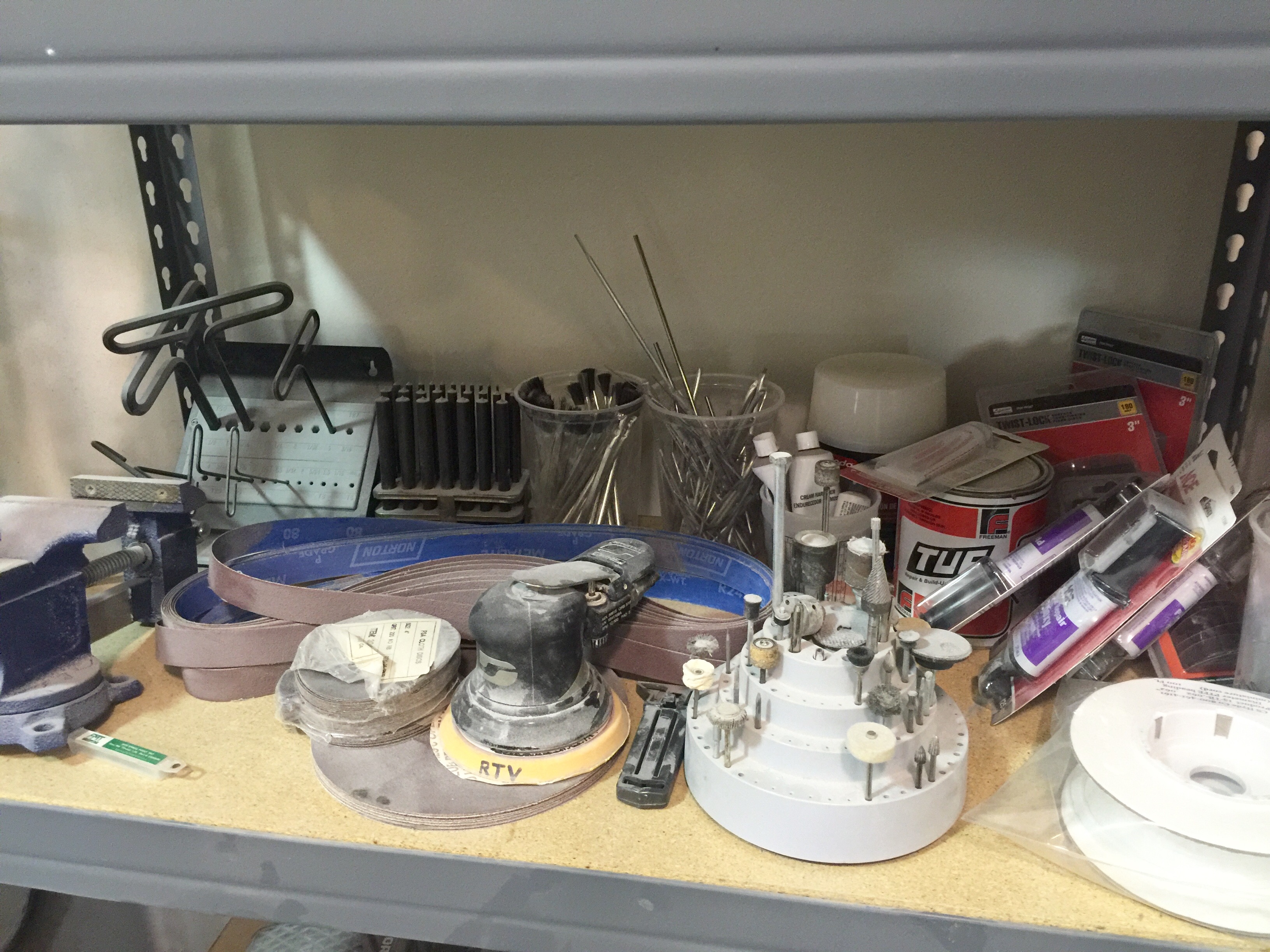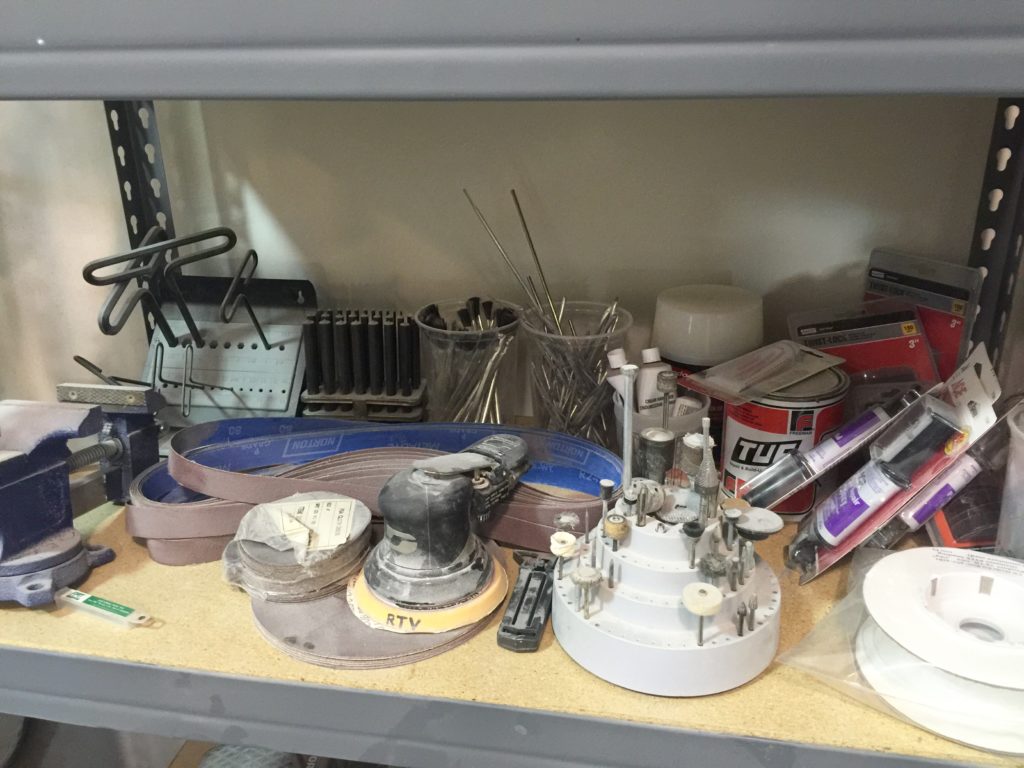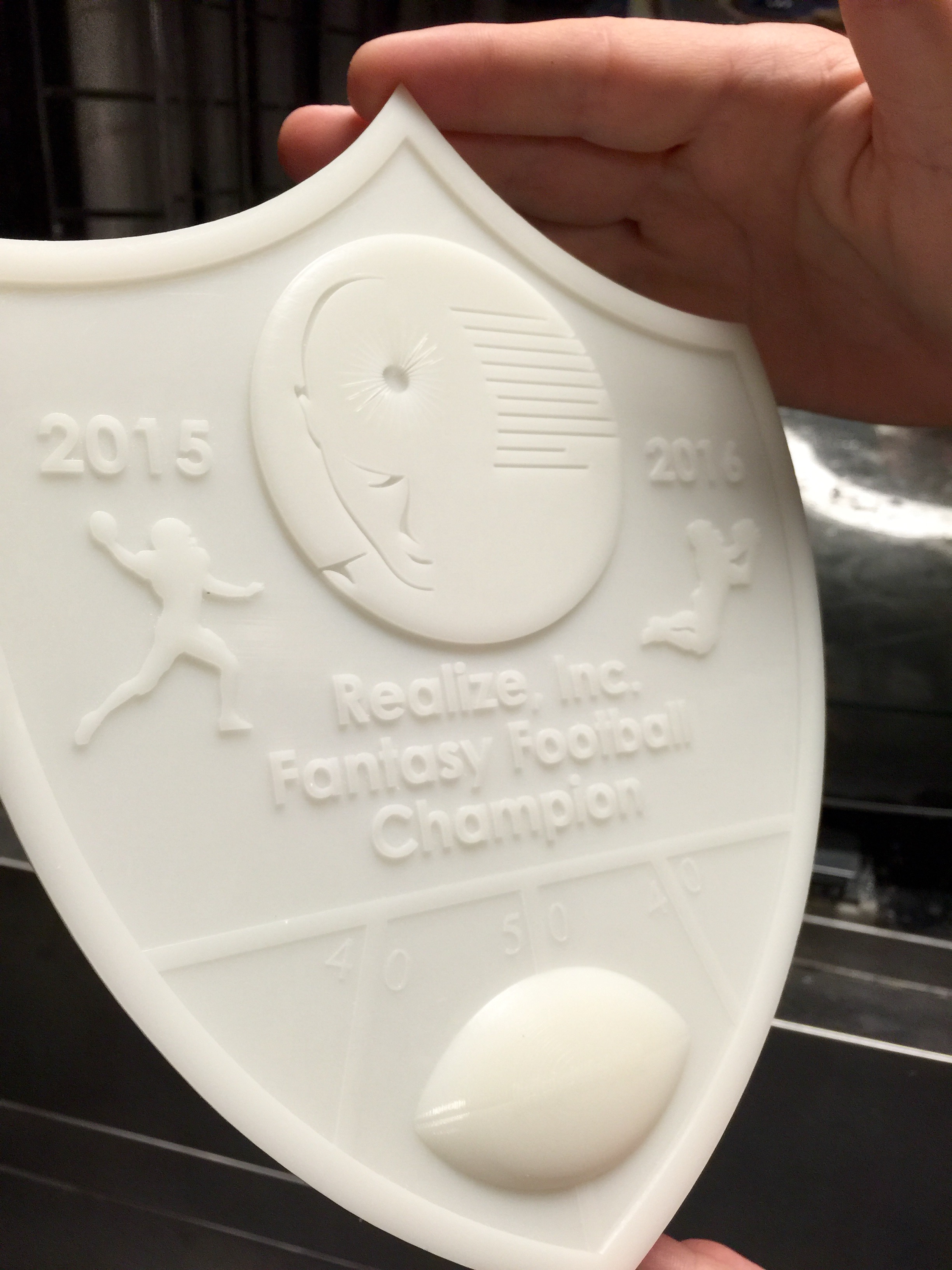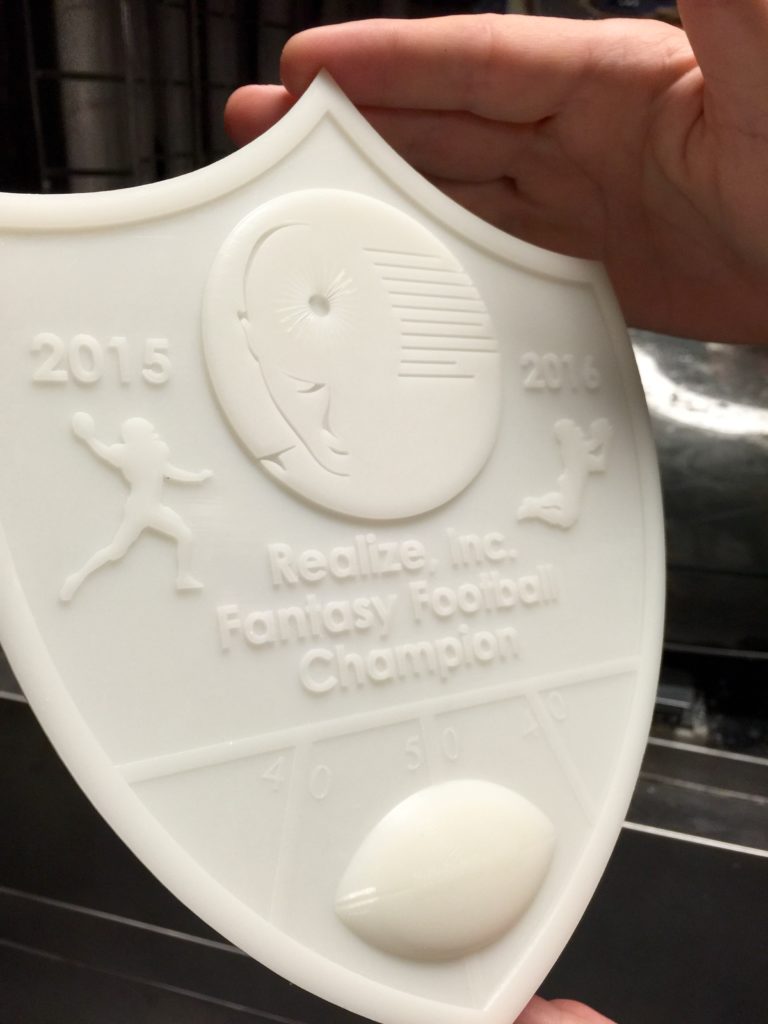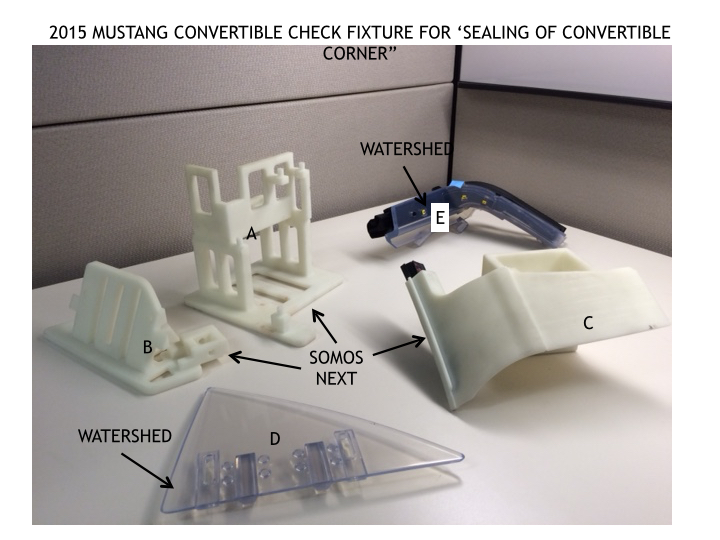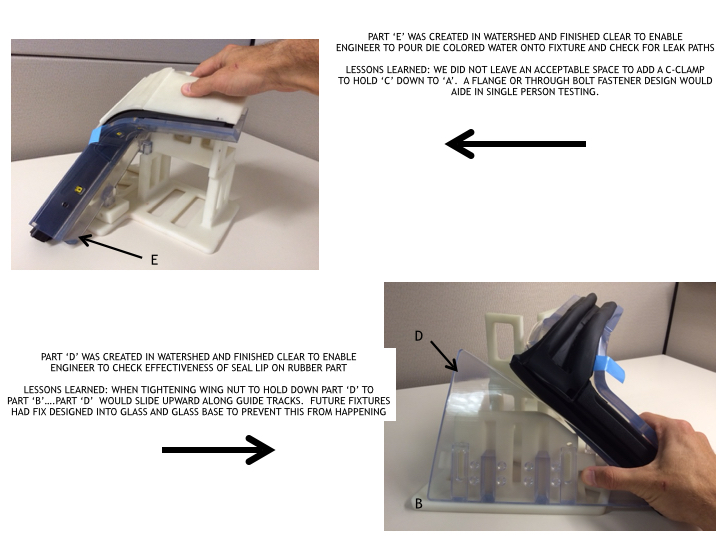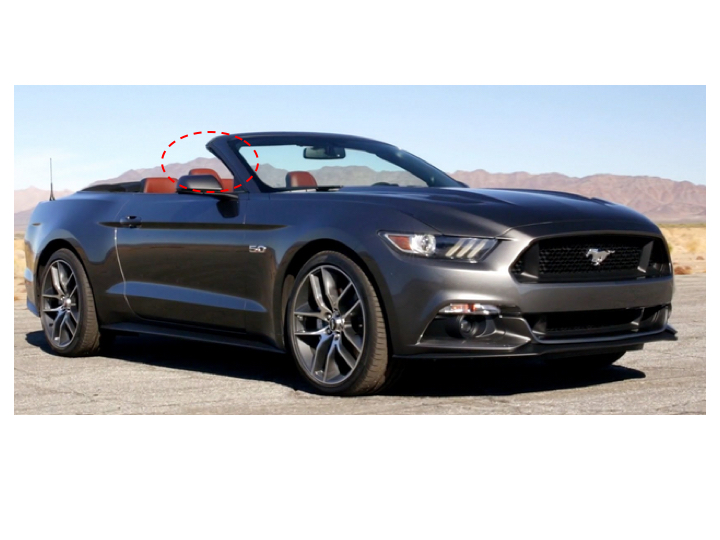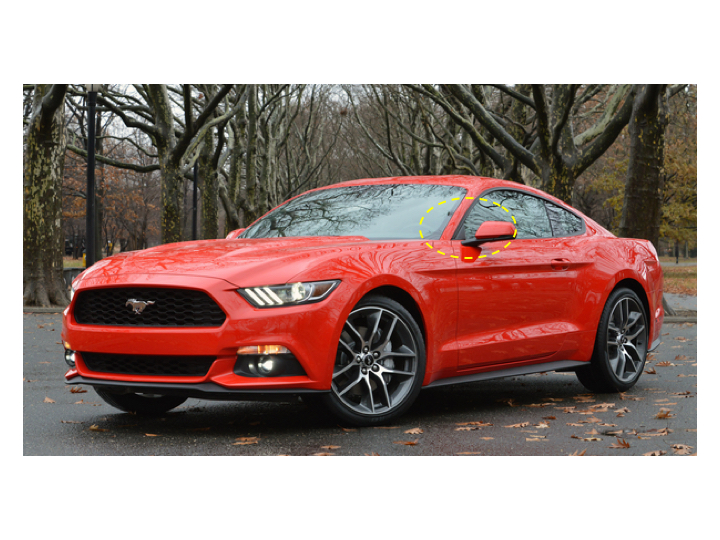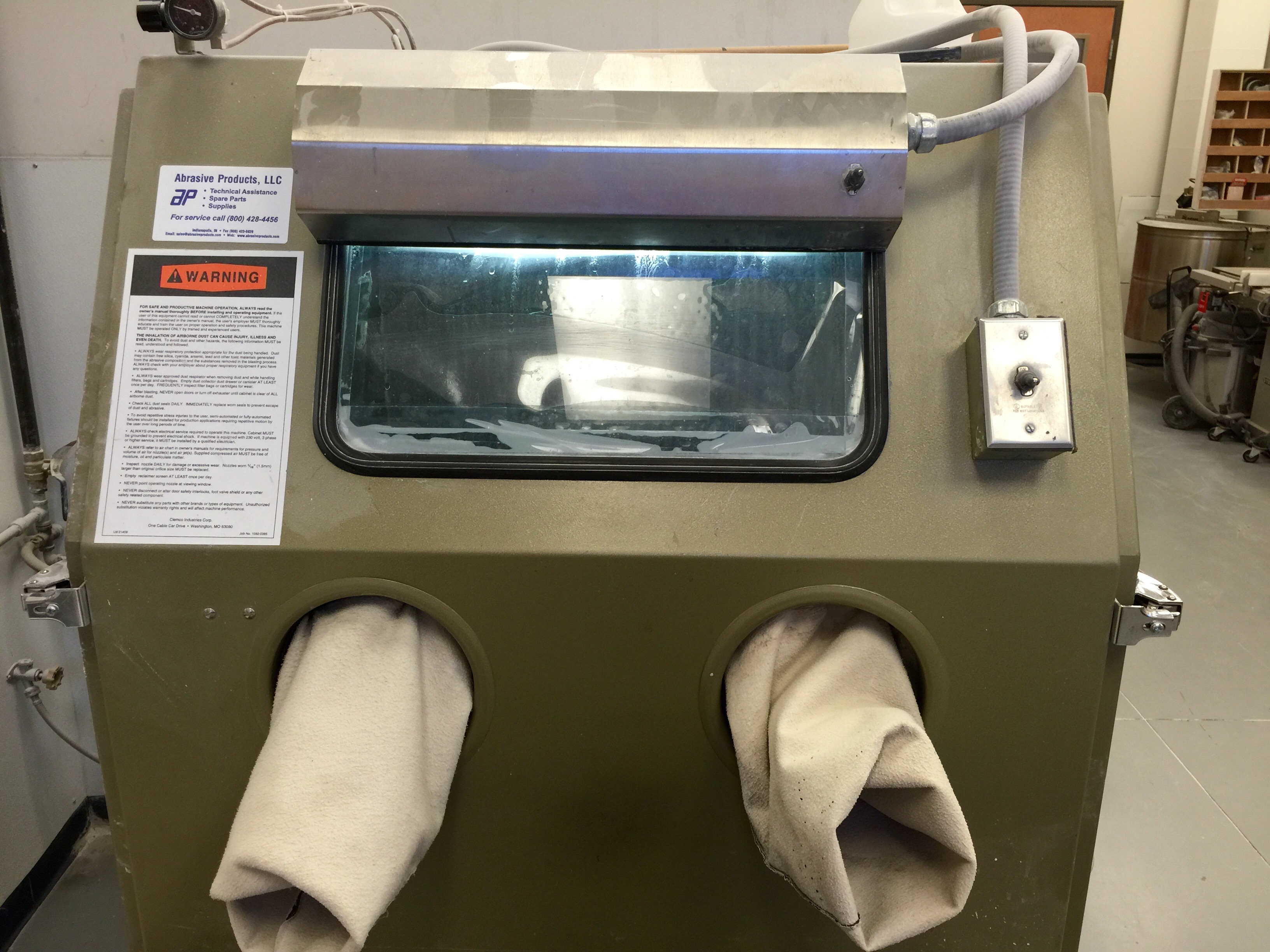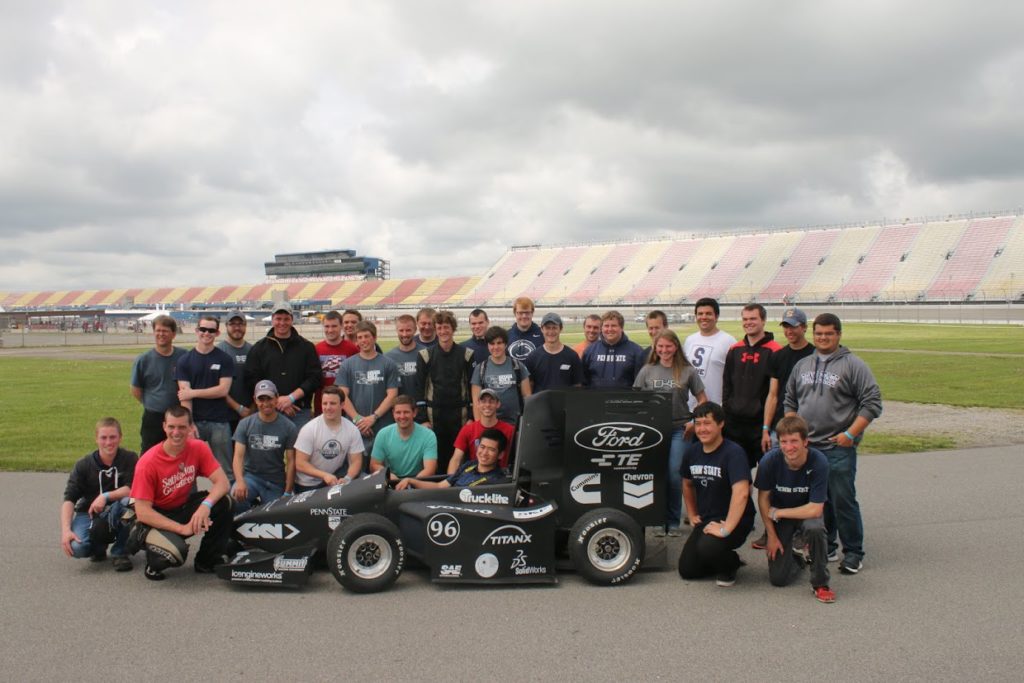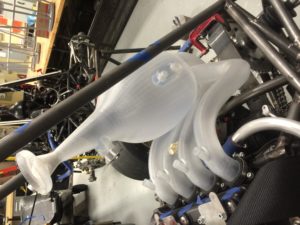We have an excellent and award winning team in our advanced custom finishing department. Here is a photo showing just a small amount of some of the “tools of the trade” from that area of the building. You never know what you will need for customization of a particular part. 3D Printing and SLA prototypes can require some out of the box thinking.
All posts tagged: cast urethane models
The Realize Photo of the Week
The NFL season is upon us. Next week we will have games to watch that actually mean something. I’m sure many of you will be drafting and competing in a fantasy football league. We have a very exciting new project that we are working on and here is a sneak peak of it. Next week Realize will deliver the “World’s first 3D printed (downloadable file) Fantasy Football Plaque. ” For now, here is a prototype of our trophy for the Champion at Realize. Still some work to do but can’t wait to see the custom finishing on this beauty. Stay tuned.
Building a vehicle using 3D Printing
One of the more interesting and exciting projects we have been working on at Realize involves customizing and creating parts for automobiles using additive manufacturing. We talked with the Senior Designer on the project about the creation of these 3D prototypes.
How did you use Realize and 3D Printing to help with your project?
Originally our Product Design and Development teams were looking for ways to replicate automotive sheet metal and trim based on 3D Math CAD data. We wanted something we could mount our actual parts to that would show how our parts were intended to perform on the vehicle if it was built to spec. Eventually our company decided to starting using 3D Prints to replicate changes to sheet metal and trim to show customers how a certain sealing environment changes would be helpful to our methodology. This would help our customers understand why we needed to make environment changes. Then we turned to using 3D Prints to make check fixtures for our sealing environments. During prototype phases, getting actual sheet metal to mount our parts to in the environment it was intended by CAD can be difficult. Also, a vehicle would have to be located for a meeting. Being able to replicate a portions of the body side, door and trim panels and include door swing gave us the ability to bring our sealing environments straight to the customer in an office setting for discussion. I cannot stress enough the complexity of some of the fixtures and jigs we have designed.
How do you think you will use additive manufacturing in the future and are there any new directions or capabilities you would like to see in the industry?
Our Teams are always looking into how we can take additive manufacturing to the next level. We strive on continuos improvement and are always fine tuning our fixture and jig designs in CAD to get the most testing possibilities we can out of them. In the beginning we had single parts printed to mount to. Now we are making multiple piece fixtures and jigs that you can simulate glass movement, door closing and a variety of environment possibilities with shims and hardware.
What were the biggest challenges with creating the parts we did for you?
Learning the properties of the various materials. Our customers have always demanded fast turn around times and we cannot always wait for our preferred materials for printing. In some cases we have had to choose something different than our normal selection so we can have the parts in our hands by a certain date for a customer meeting. Some times it works out for us and others it does not. We try not to stray away from what we know will work, however, some times we are forced to due to timing requirements.
What is something that you personally would like to have 3D Printed?
If I still had the files it would be the CAD parts I made back when I first started learning in CAD design 17 years ago. The only way to really understand what a software is capable of is to log hours on it and explore beyond what you are taught. So I used to stay after classes and design my own ideas and concepts and also on my lunch hours. This was back when SDRC I-Deas was popular and everything was still on Unix. It was also a few jobs ago. I saved a lot of those files on a hard disc many moons ago but couldn’t tell you what happened to it.
The Realize Photo of the Week
What enhances the surface finishes of parts? This cool/scary looking machine!
It goes by the name of wet blast cabinet or water honing machine and it’s one of the most interesting looking machines around Realize, Inc. headquarters.
Realize and Penn State Formula SAE
Realize enjoys working with students that are in the process of doing amazing things. We are a sponsor of the Penn State Formula SAE team and helped them out with a new intake. We talked with George Mishkin, Team Captain, about how they are using 3D Printing and additive manufacturing to gain an advantage over the competition.
Realize: Tell us about your team and how we started working together.
George: Penn State Formula SAE is a student run design team with the task of designing and prototyping a formula style racecar for the annual Formula SAE competition. At this competition, held at Michigan International Speedway, teams from all over the world are judged in both static and dynamic events including: cost of production, ergonomics, an investment presentation, acceleration, autocross time, and a grueling endurance race. The competition provides students with an opportunity to apply their engineering, organization, and communication skills in an industry-like setting. Every year, the team 3D prints a new intake design and that is how the relationship started between Realize and the team.
How did you use Realize and 3D Printing to help with your car?
Every year, the team needs to design a new intake for the car. The 3D printers the team uses in house is no where near as technical as the team would like them to be because we need to print an intake that is lightweight and durable. We find that Realize and their 3D printers supply us with our needs.
How do you think you will use additive manufacturing in the future and are there any new directions or capabilities you would like to see in the industry?
In the future, I feel I will use additive manufacturing as a means to test new prototypes. In the automotive industry, new components are being invented all the time. It is one thing to see this new component on screen, but it is another to see it being used. Additive manufacturing will allow me to print my new component and test right away to see if it works in the total design. This way, I can make changes right away instead of waiting for mold to be created first, saving me time along with money. I would like to see more components mass produced using additive manufacturing. The team makes our uprights by machining aluminum in a CNC machine. This process takes weeks to make just one upright. If they were to be done using additive manufacturing, the uprights would only take days. I feel industry needs to shift mass produced parts over to additive manufacturing.
What were the biggest challenges with creating the parts we did for you?
The biggest challenges with creating our parts is making sure the intake is positioned correctly to the headers on the engine along with the intake being durable. The team has seen in the past where the throttle body breaks the neck of the intake due to the weight of the throttle body. We have also seen the intake broken due to removing it from the engine. The team has to maintain a balance between durability and lightness of the intake and it is always a struggle.
What is something that you personally would like to have 3D Printed?
I would love to have a 3D printed corvette. It has been my favorite car ever since I was a young boy and it still is today. I could stare at one all day.
 3D Printing/Rapid Prototyping/Additive MFG
3D Printing/Rapid Prototyping/Additive MFG